How To Draw A Spider Web Easy
14 of the Most Elaborate Spider Webs Ever Found in Nature
The next time you're sweeping cobwebs out of the corners, take a moment to appreciate the elaborate designs of these sticky bug-traps.
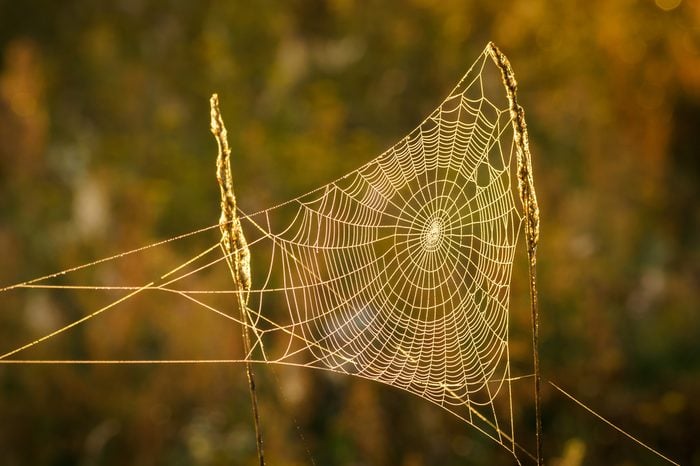 Sinelev/Shutterstock
Sinelev/Shutterstock
Orb webs
These circular creations are made by a class of spiders called orb weavers that includes lots of common garden spiders. They adjust their design based on which insects they're most likely to capture: If they mostly catch flies, they use a tighter weave, and if they're focused on crickets, the web has to be stronger and stickier so the thrashing bugs can't break out before the spider can kill it with a bite.
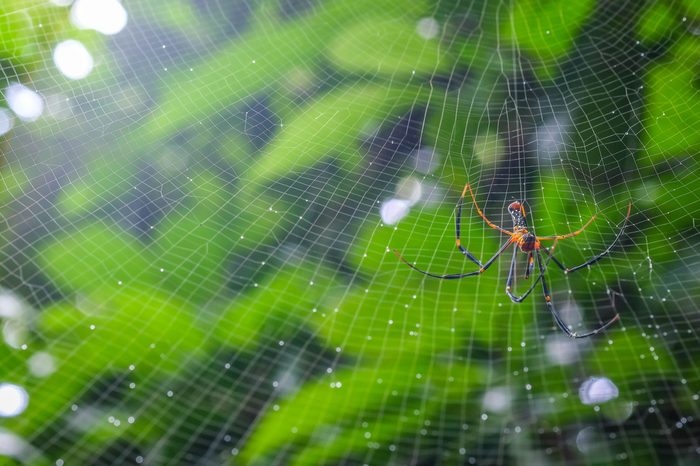 nuu_jeed/Shutterstock
nuu_jeed/Shutterstock
Spider silk production
This golden orbweaver spider has seven kinds of silk glands, and each one creates its own liquid protein (called spidroid). The proteins are solidified and combined in numerous ways to create strands with different uses, and they're released as silk from six spinnerets. Some types of silk are used for web building, but others are made for egg cases or wrapping up prey. This simple step will keep spiders out of your house.
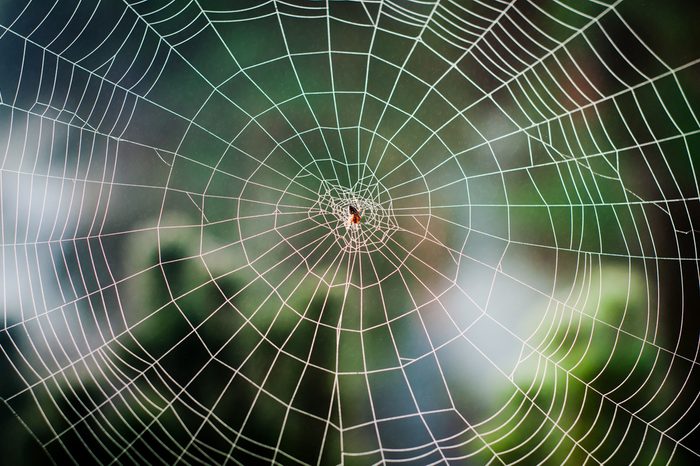 Eugene Kalenkovich/Shutterstock
Eugene Kalenkovich/Shutterstock
Arachnid architecture
On most orb webs, the threads that serve as spokes are stiffer and aren't sticky. Once the structural supports are in place, the spider starts on the outside and spirals inward, attaching each segment of silk and coating the strands with a sticky substance. Once an unlucky bug gets stuck, killed, and wrapped, this design generally maintains its strength, so the spider can make minor repairs rather than having to rebuild from scratch. This is important because web-building uses a huge amount of energy for the spider. (Sometimes they eat the webs they're done with, in fact.) Don't miss these exceptionally rare National Geographic photos you won't be able to get out of your head.
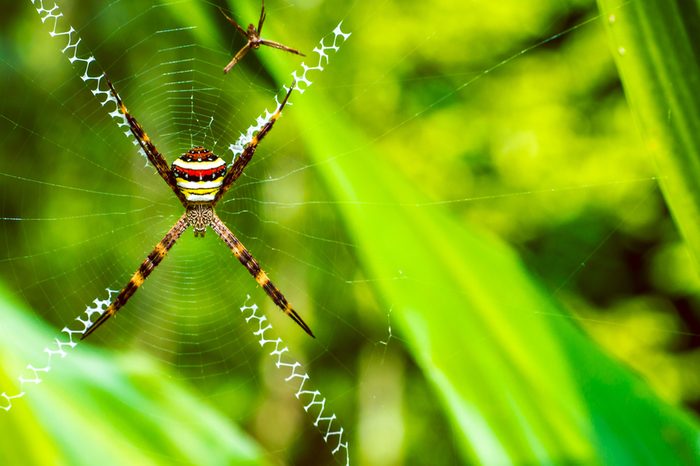 Igor Tichonow/Shutterstock
Igor Tichonow/Shutterstock
Web decoration
This St. Andrew's cross spider has gone the extra mile to weave a special pattern, called a stabilimenta, into its web. Researchers aren't sure why some orb-weaving spiders do this—it could be to camouflage themselves or to look bigger to predators, or to make their webs more visible to creatures (like humans or other animals) that might otherwise accidentally crash through their webs. Scientists also theorize that the decorations reflect ultraviolet light in a way that attracts prey, or they might just help spiders maintain optimal body temperatures. Here's how to keep these creepy-crawlers and other insects out of your home.
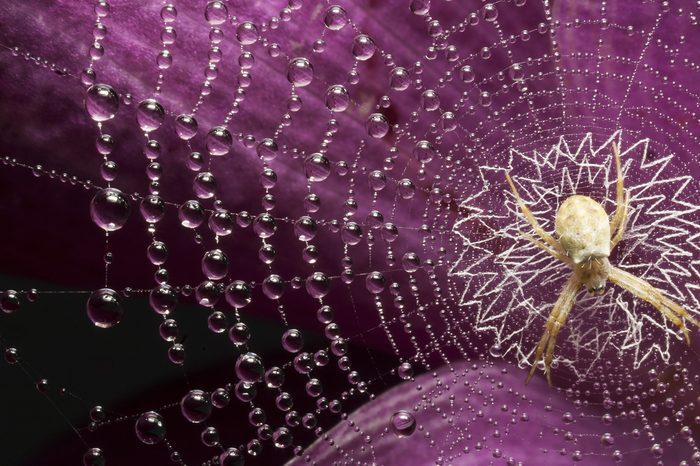 Jamikorn Sooktaramorn/Shutterstock
Jamikorn Sooktaramorn/Shutterstock
Silk art
Spider researchers (arachnologists) originally thought that stabilimenta added stability to webs, which is how the decorations got their name. But that theory has lost favor in recent years. Spiders might just have extra silk to use up, or maybe it's just a female spider's way of attracting a mate. Most male spiders never build webs, but they can spin silk—some use it to wrap up dead bugs as gifts that they offer to females in order to keep from being eaten before they can mate. Next, check out these other bizarre bug facts that will totally freak you out.
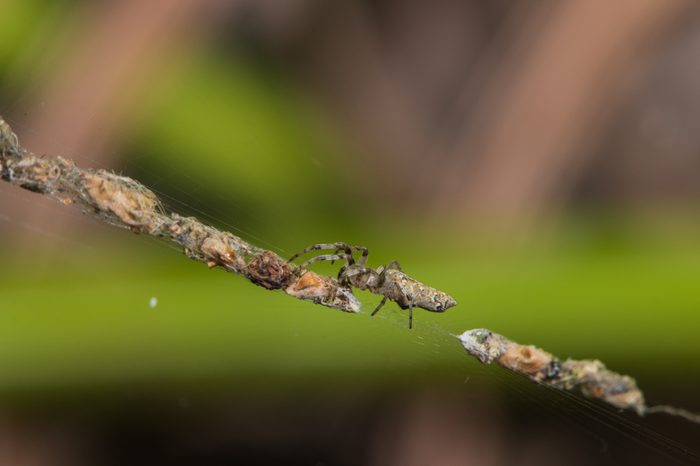 Somyot Mali-ngam/Shutterstock
Somyot Mali-ngam/Shutterstock
One spider's art is another's junk
The trashline orbweaver doesn't have a typical aesthetic sense—it wraps up poop, leftover pieces of prey, and other debris in a straight line. The spider is camouflaged by this collection, and she typically also keeps her egg sacs hidden among the trash, too. Interestingly, these spiders have recently been found to have biological clocks that run naturally on an 18.5-hour cycle, rather than the 24-hour cycle found in every other animal studied, including humans, fruit flies, and hamsters.
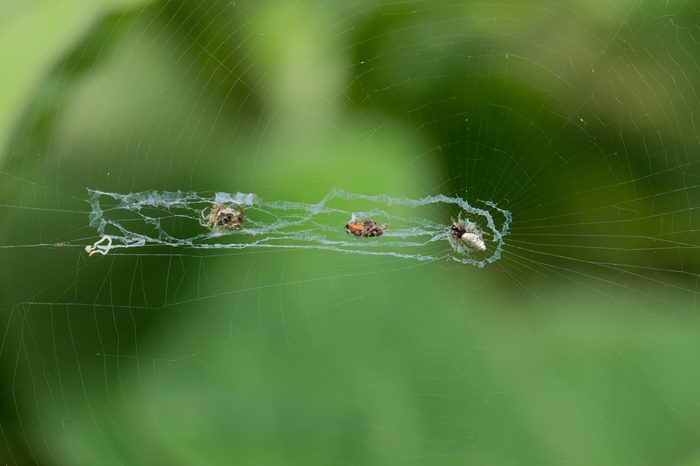 nitat/Shutterstock
nitat/Shutterstock
Tricky design
A spider found in 2012 in the Peruvian Amazon uses its trash in a more elaborate way, creating what looks like a decoy spider that hangs in its web. The fake spider is about an inch long, and its builder—a tiny spider that's only about a quarter of an inch long—can shake the web to make the decoy appear to move. Scientists found another decoy-builder in the Philippines the same year, suggesting that the behavior evolved separately in two places that are 11,000 miles apart. Here are more photos of nature's most bizarre creatures.
 Federico.Crovetto/Shutterstock
Federico.Crovetto/Shutterstock
Electric lines
This feather-legged lace weaver has an unusual method of catching prey: It spins super-tiny strands of silk from an organ called a cribellum that most spiders don't have. Then it uses special hairs on its back legs to comb the nanoscale filaments of silk, which creates an electrostatic charge that leads the threads to have puffs on them that are very sticky without having any of the gluey substance that typically coats webs of other spiders.
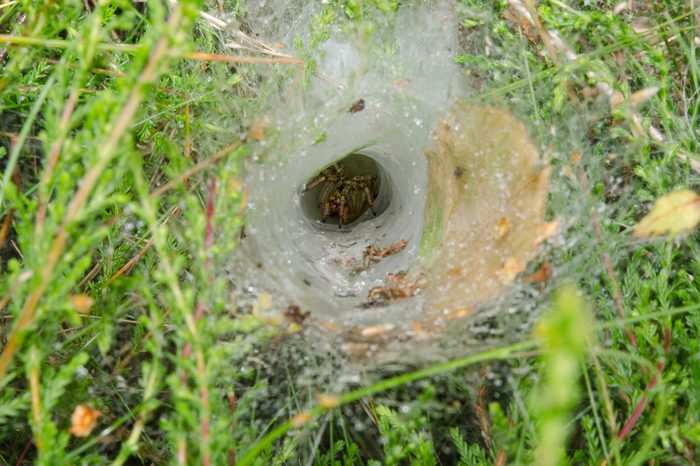 PHOTO FUN/Shutterstock
PHOTO FUN/Shutterstock
Funnel weavers
Not all spiders build classic orb webs. There are hunters like the wolf spider that don't build any webs at all and others that create very functional—if less picturesque—webs, like the funnel-weaving spiders. They generally build webs with a flat surface for capturing prey and a tube that leads down to their own comfy burrow. The spider rushes out when it senses that an insect has gotten tangled in its silk and drags it down to its lair to eat. Don't miss these amazing nature photos you won't believe are real.
 Peter Waters/Shutterstock
Peter Waters/Shutterstock
Black widow web
These famously venomous spiders build another variety called a sheet web. It consists of a horizontal sheet of silk supported by threads going up to some support. Underneath, the black widow creates taut threads that hang down to the ground where they're attached by sticky glue. If an insect bumps into one of these, it detaches from the ground, sticks to the intruder, and leaves it dangling. The spider feels the vibrations through the sheet and heads down for dinner. Find out what other common household items are attracting spiders along with other pests.
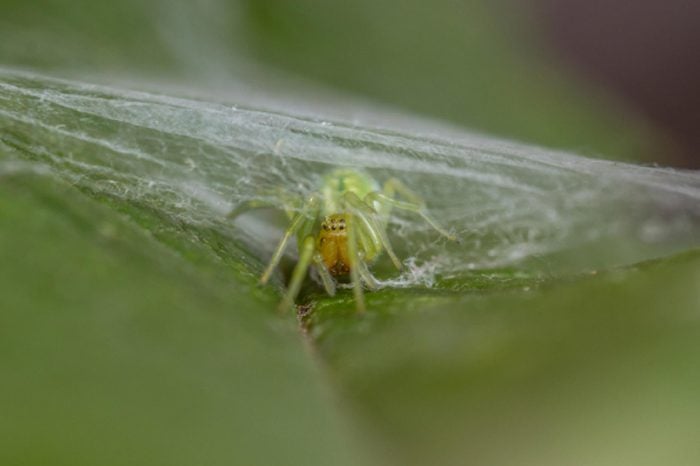 thatmacroguy/Shutterstock
thatmacroguy/Shutterstock
A tiny trap
This Nigma walckenaeri spider builds its mesh web on the surface of a leaf; it just needs a curved surface, so it can create a tiny hideout for itself in your garden. Other spider species create webs called the bowl-and-doily: A bowl-shaped web is suspended from plant stems and anchored on the bottom to a horizontal sheet (the doily). Insects flying past bump into a thread and fall into the bowl, where they're eaten by the spider.
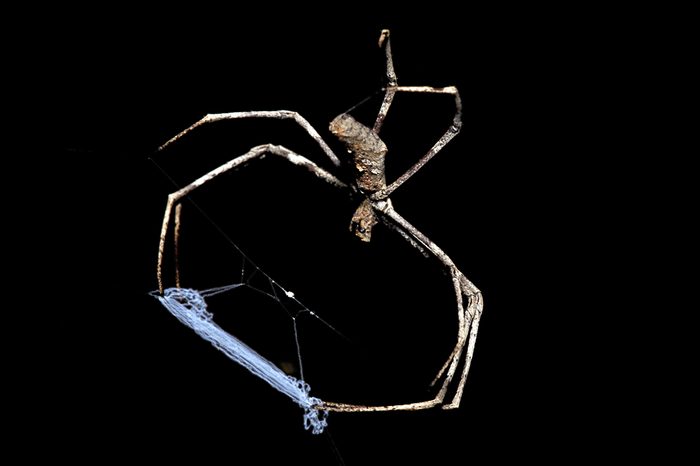 Peter Waters/Shutterstock
Peter Waters/Shutterstock
Tossing a net
The ogre-faced spider might be homely, but it has a very special skill set: Rather than building a large web to trap passing prey, it builds a tiny foraging web that it holds in its first two pairs of legs. Then it waits patiently until an insect happens to wander past, and it captures the bug with its net like 1960s-era cartoon Spider-Man catching the Green Goblin. Check out these arrestingly beautiful photos that stand the test of time.
 Courtesy Moonsung Cho, Peter Neubauer, Christoph Fahrenson, Ingo Rechenberg at the Technical University of Berlin
Courtesy Moonsung Cho, Peter Neubauer, Christoph Fahrenson, Ingo Rechenberg at the Technical University of Berlin
Ballooning
A spider's silk isn't just for trapping food. Many species are known to spin sails, catch the wind, and fly off to a new locale. A study found that spiders raise one or two of their front legs to feel the wind speed (and possibly direction) for about six seconds. If it's too cold and windy, they stay put, but when there's a warm, gentle breeze, they release silk threads that form a triangular sheet and take off into the sky. This video shows exactly what it looks like.
 SIM ONE/Shutterstock
SIM ONE/Shutterstock
Strength and stretchiness
Dragline silk, which is what spiders use to hang from ceilings or webs, is several times stronger than steel on a weight-for-weight basis. It's also stretchable, which is why webs can absorb the impact of flying insects. The venomous brown recluse spider goes a step further, producing filaments that are even tougher than typical spider silk because they spin tiny loops into each strand. Next, check out these 11 stunning photos that will make you appreciate the beauty of life.
Originally Published: April 06, 2020
Sign up for articles sent right to your inbox
Enjoy the best stories, advice & jokes delivered right to your inbox!

Subscribe & SAVE Save Up To 84%!
How To Draw A Spider Web Easy
Source: https://www.rd.com/list/elaborate-spider-webs/
Posted by: parentdights.blogspot.com

0 Response to "How To Draw A Spider Web Easy"
Post a Comment